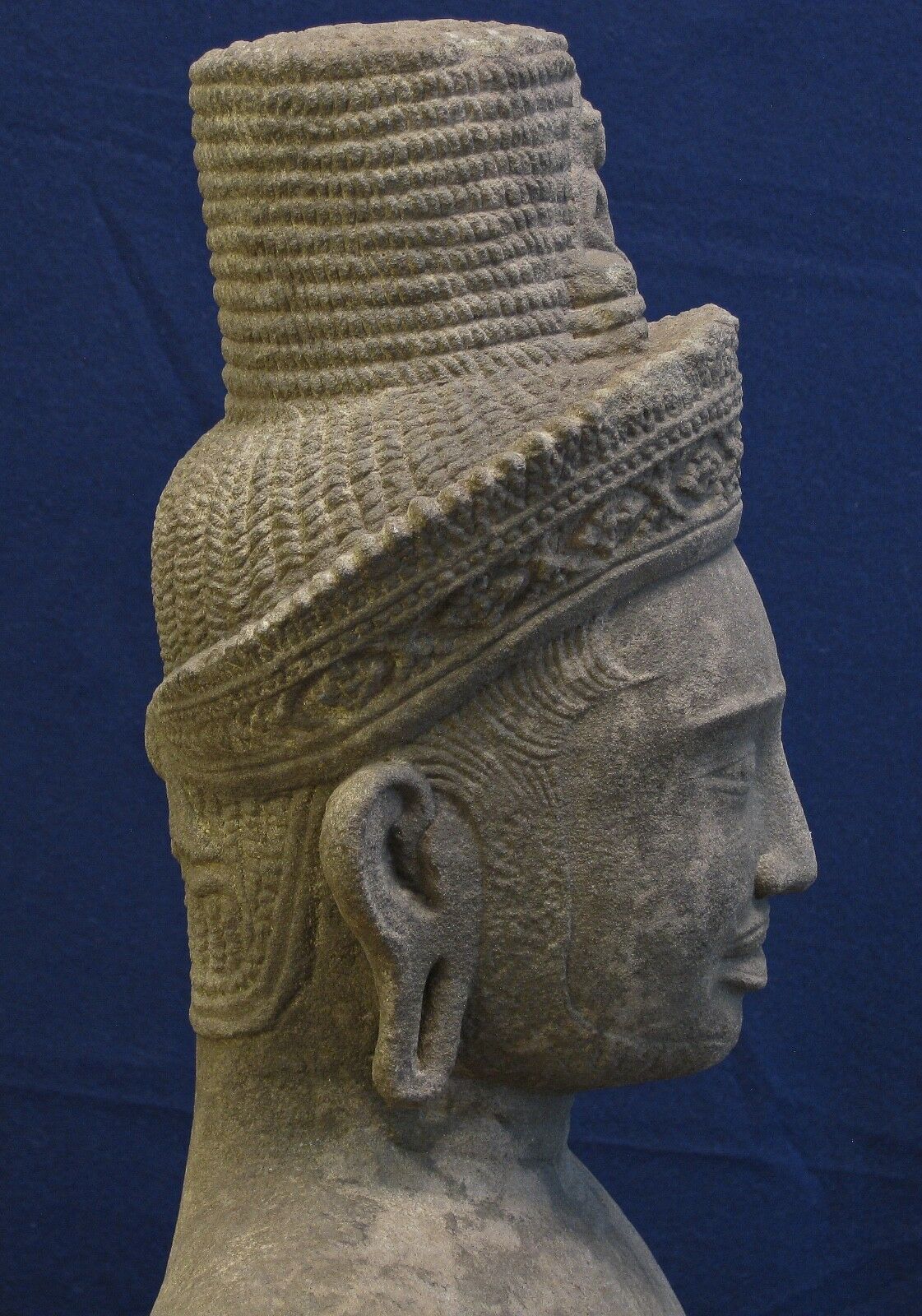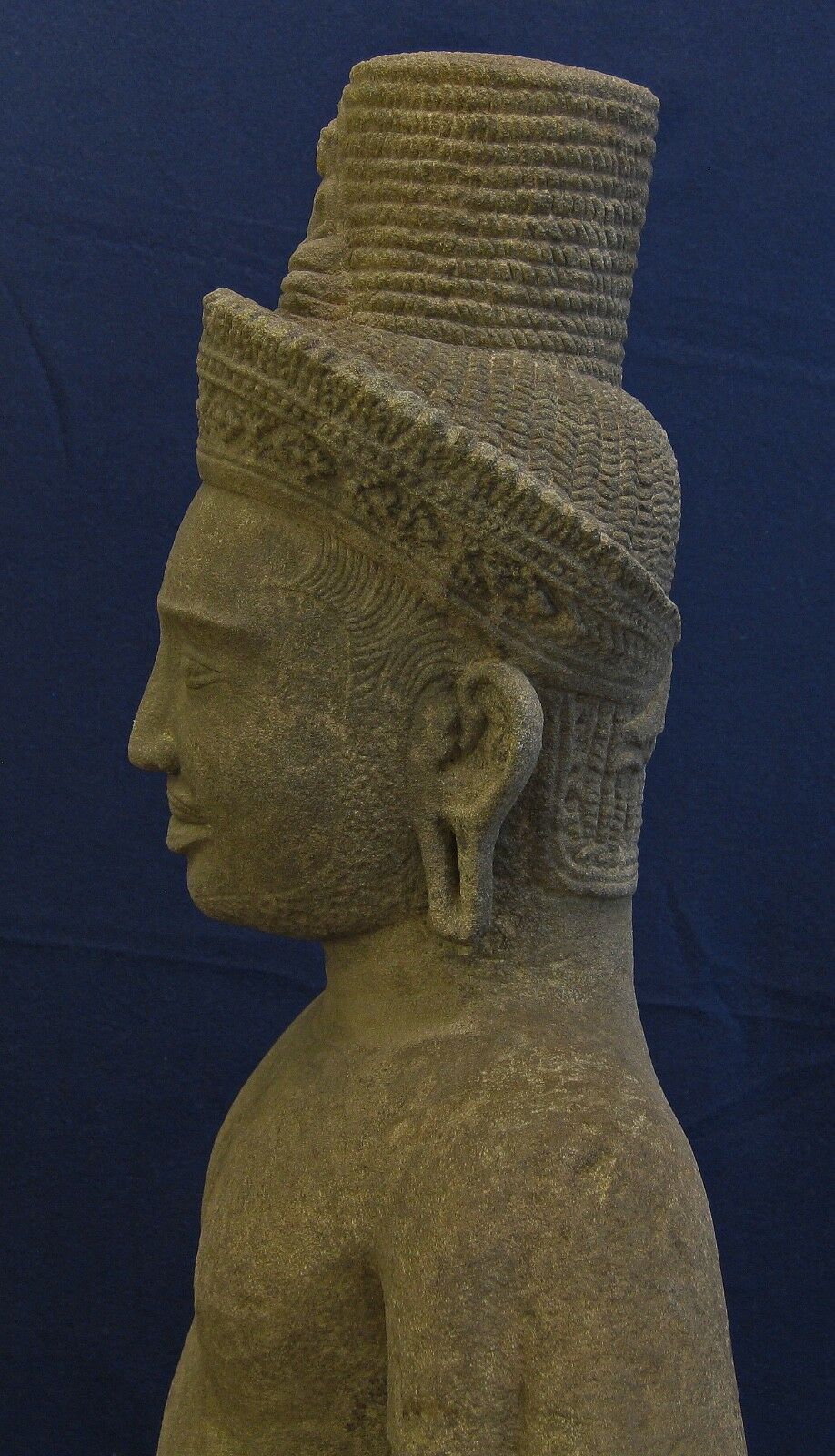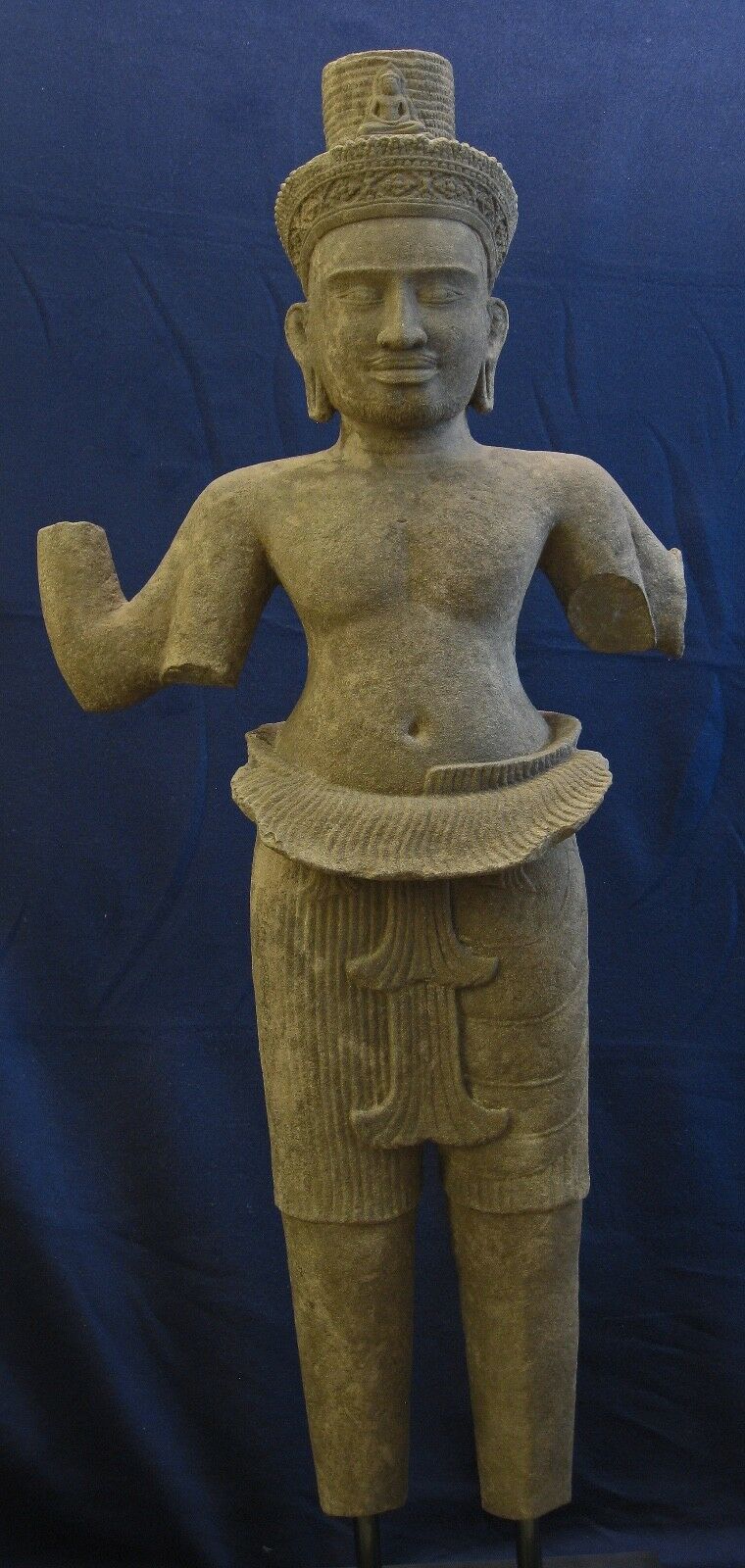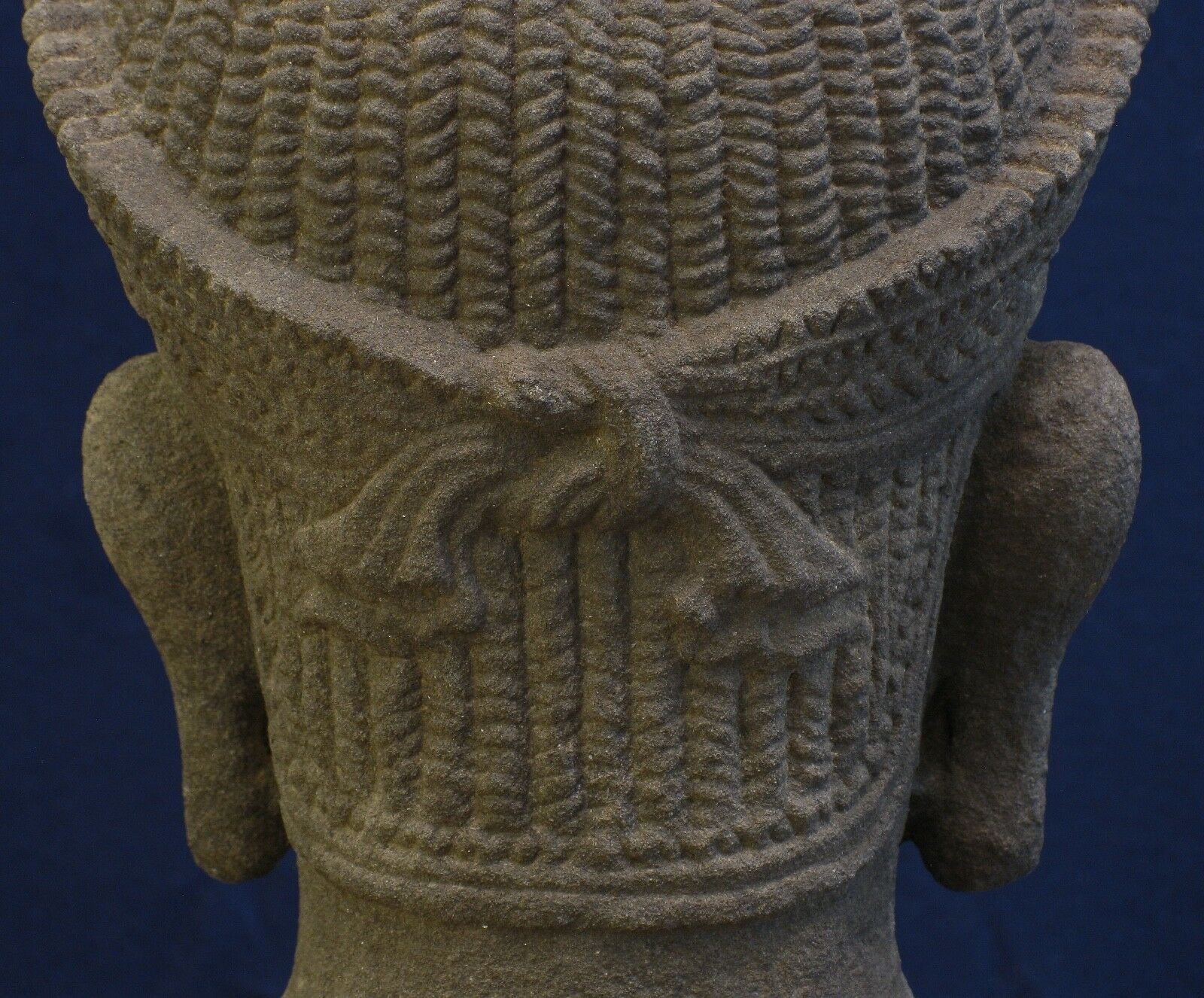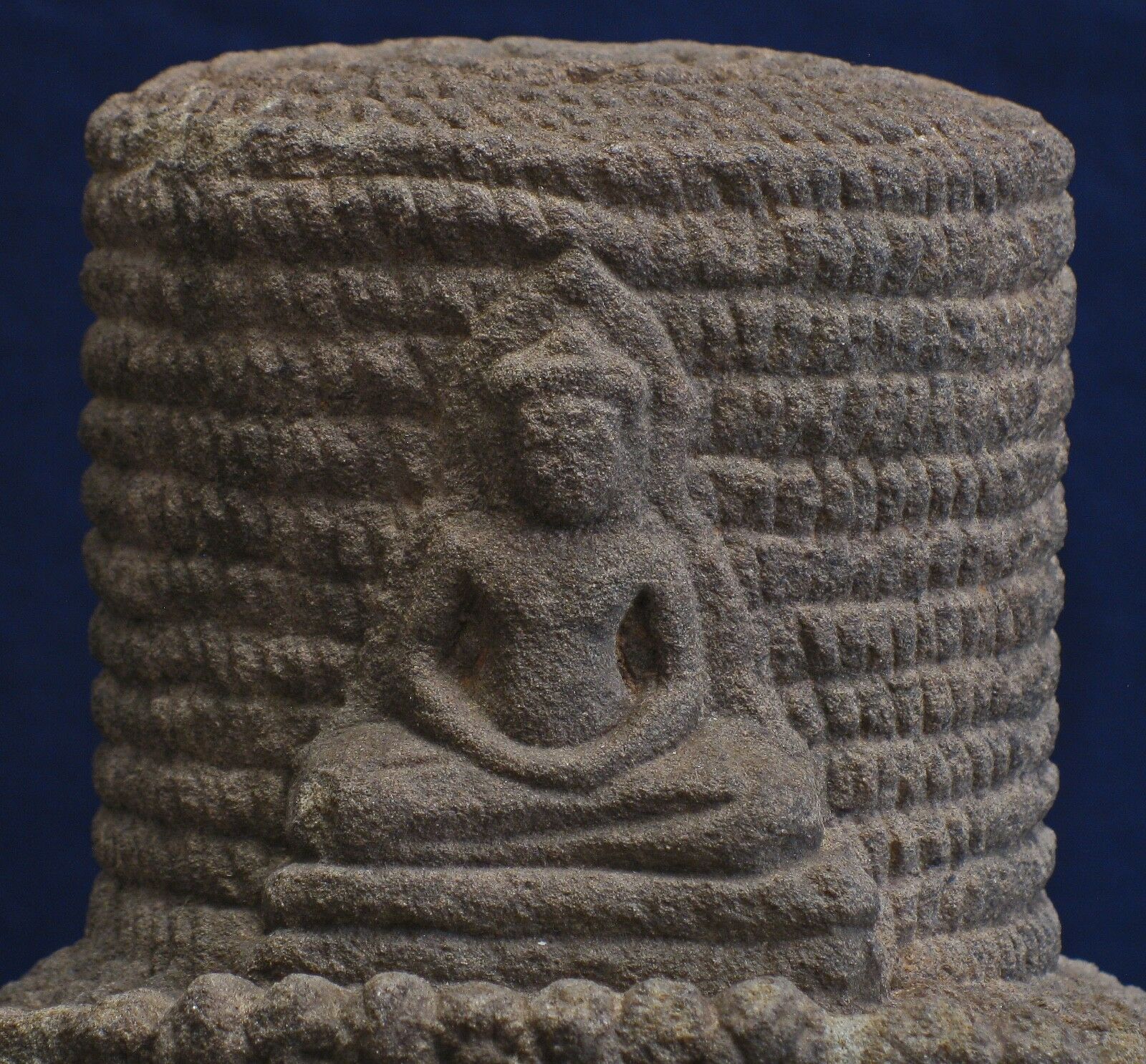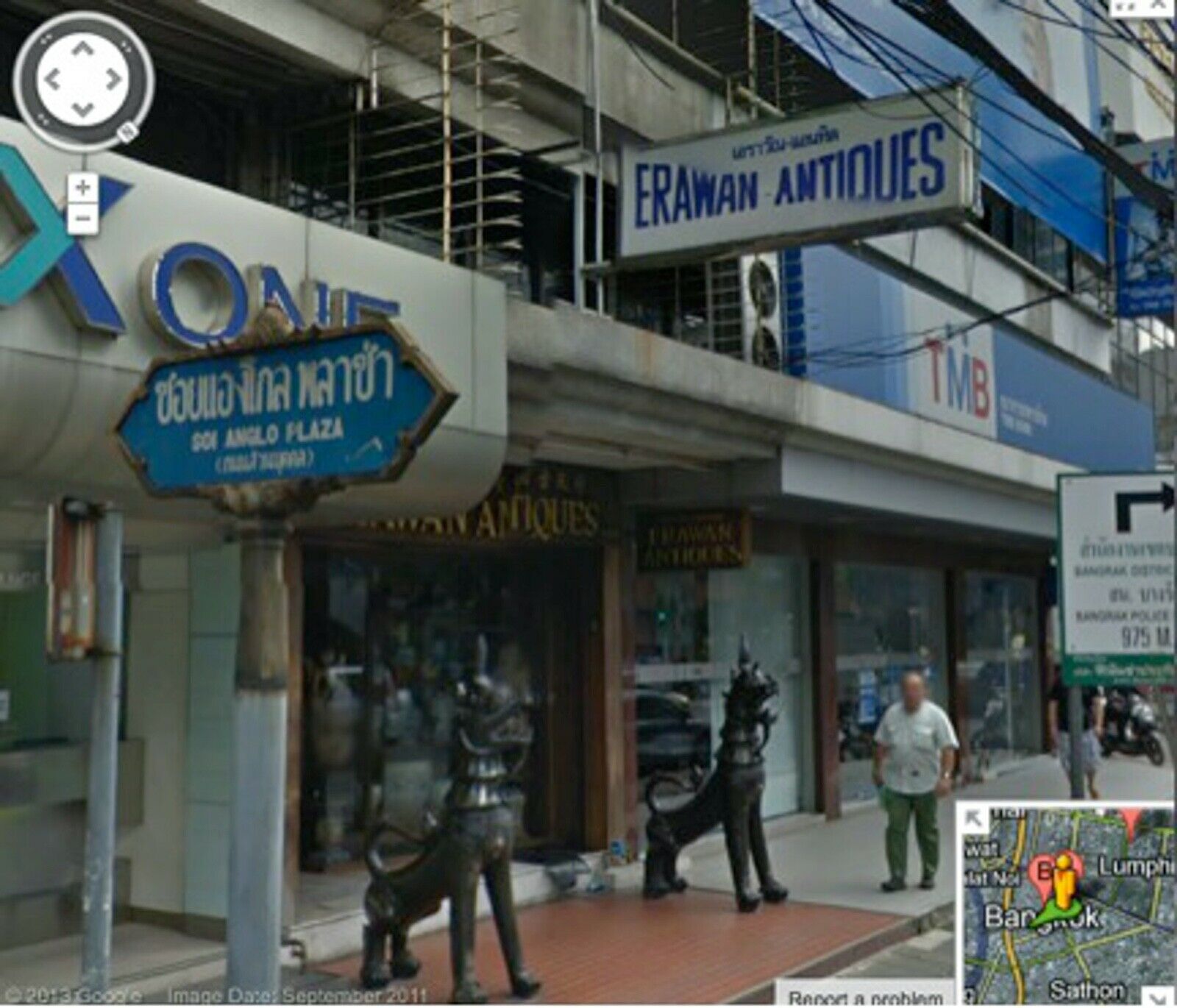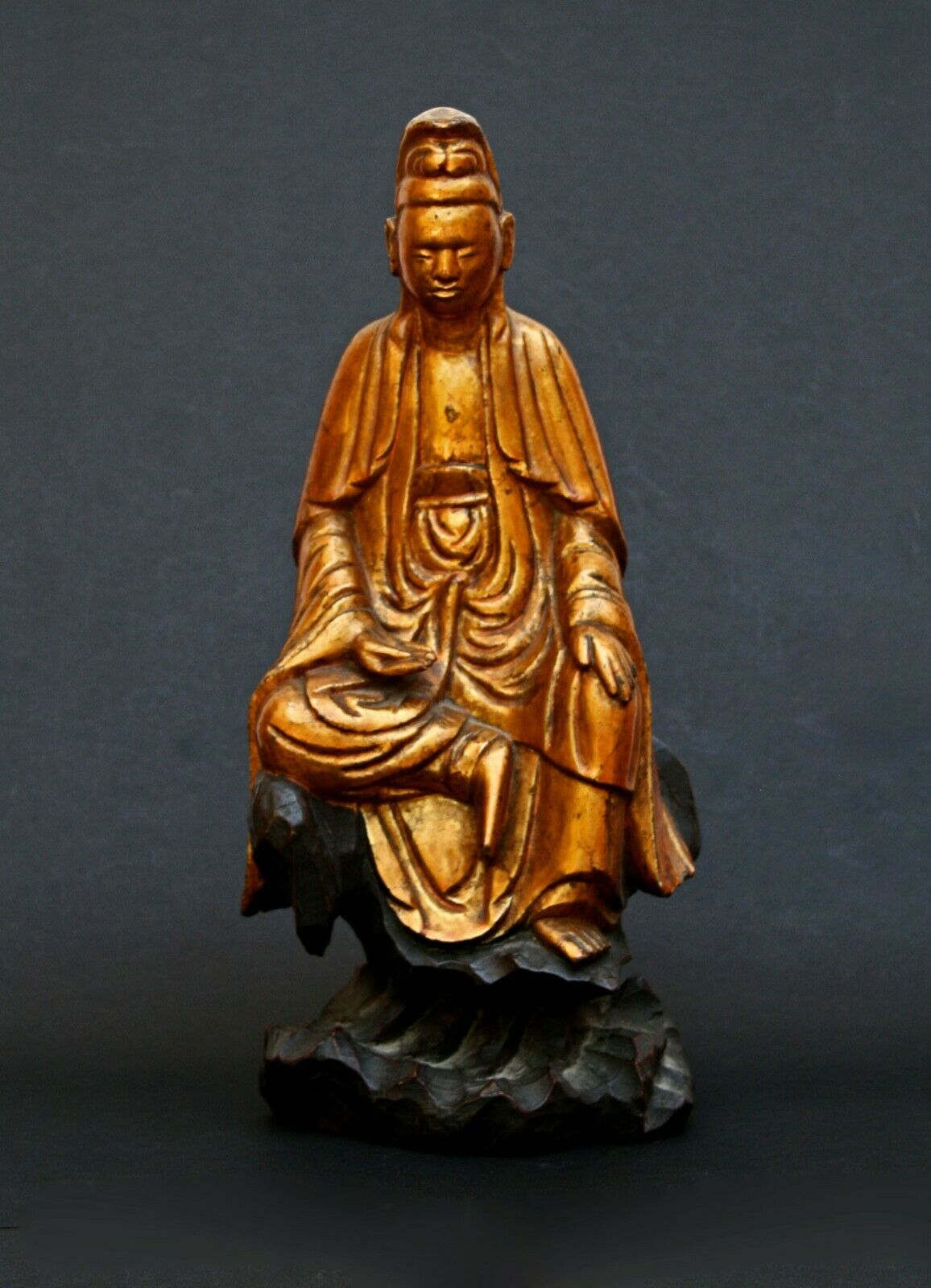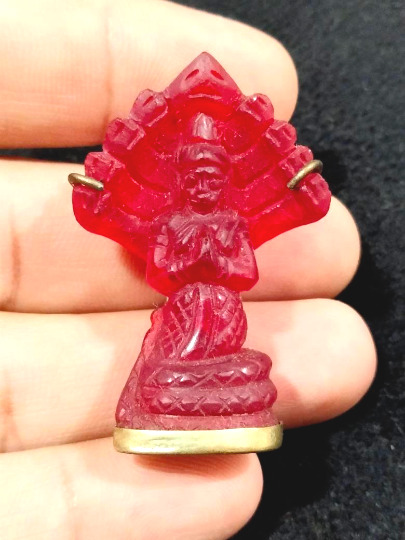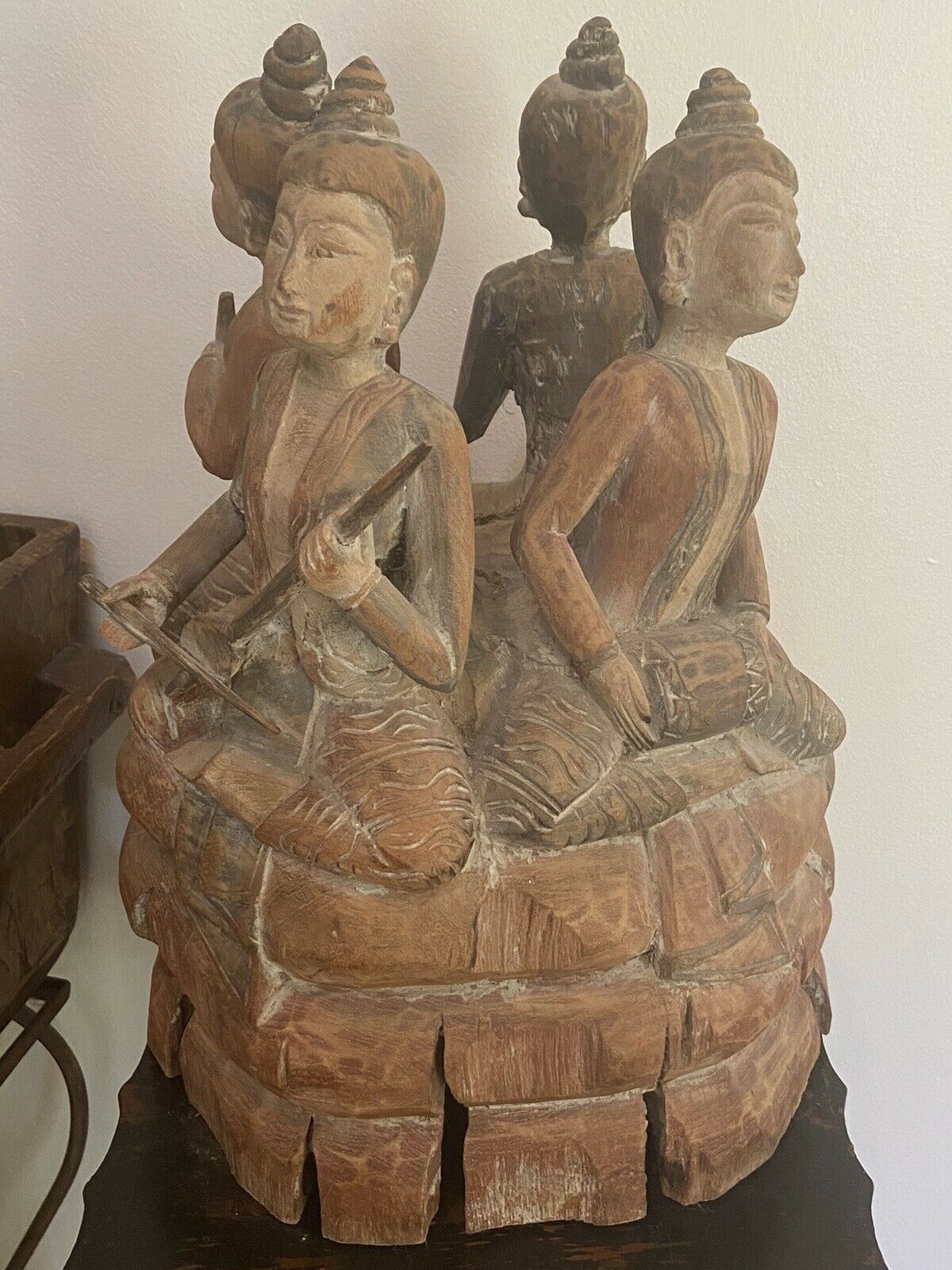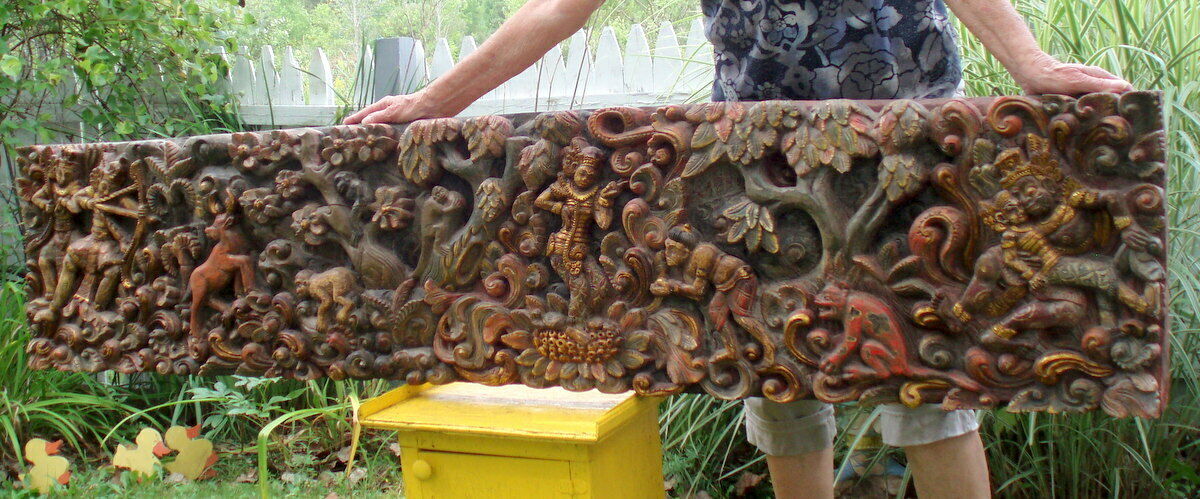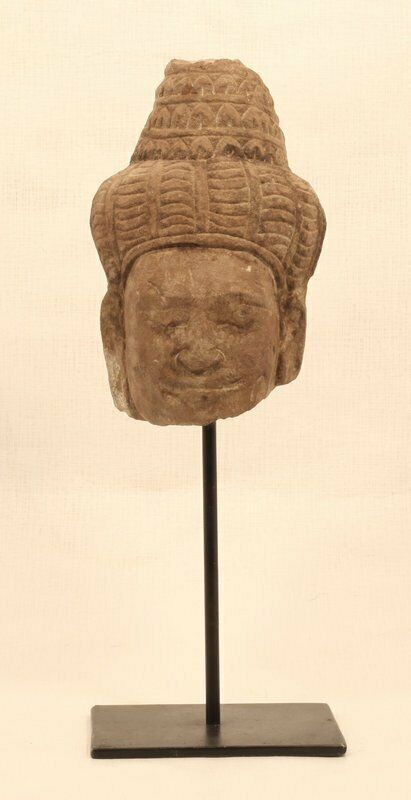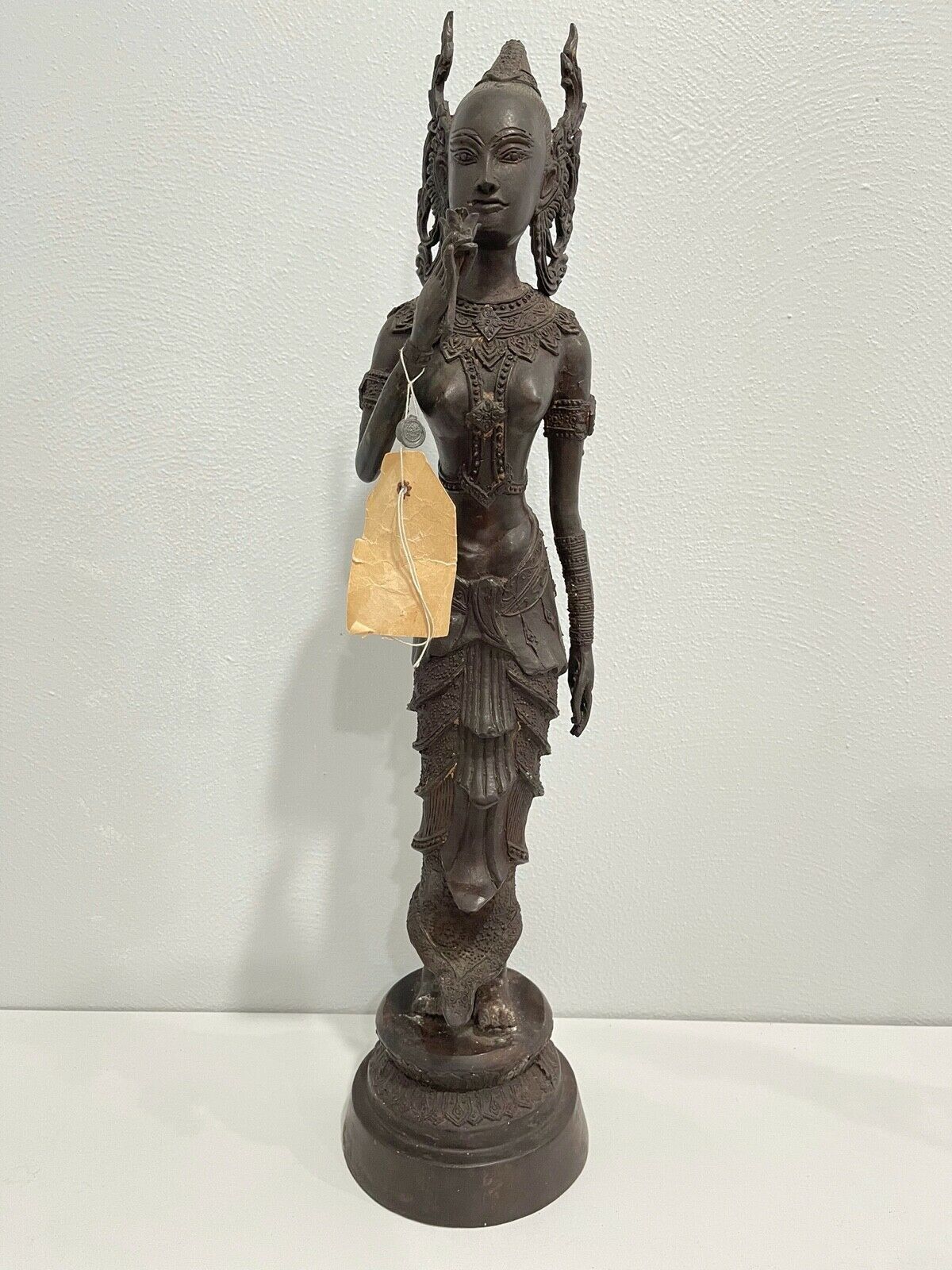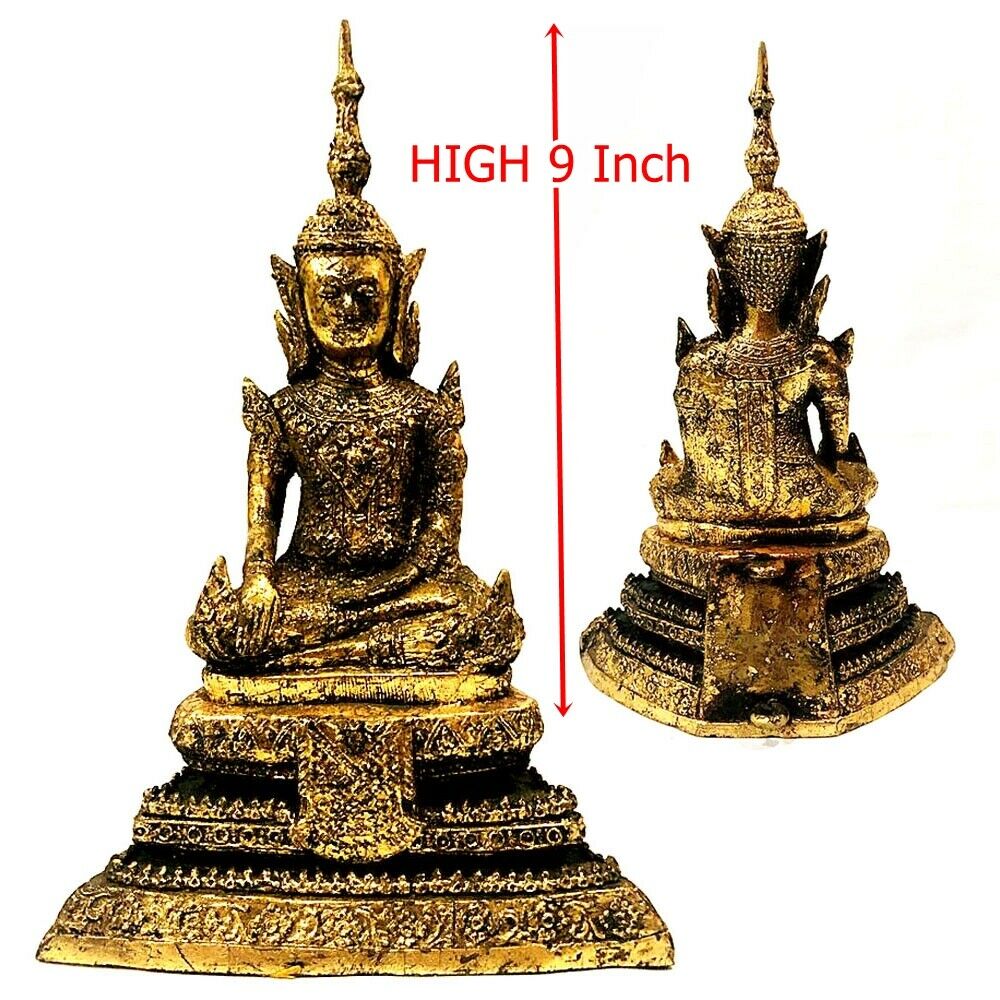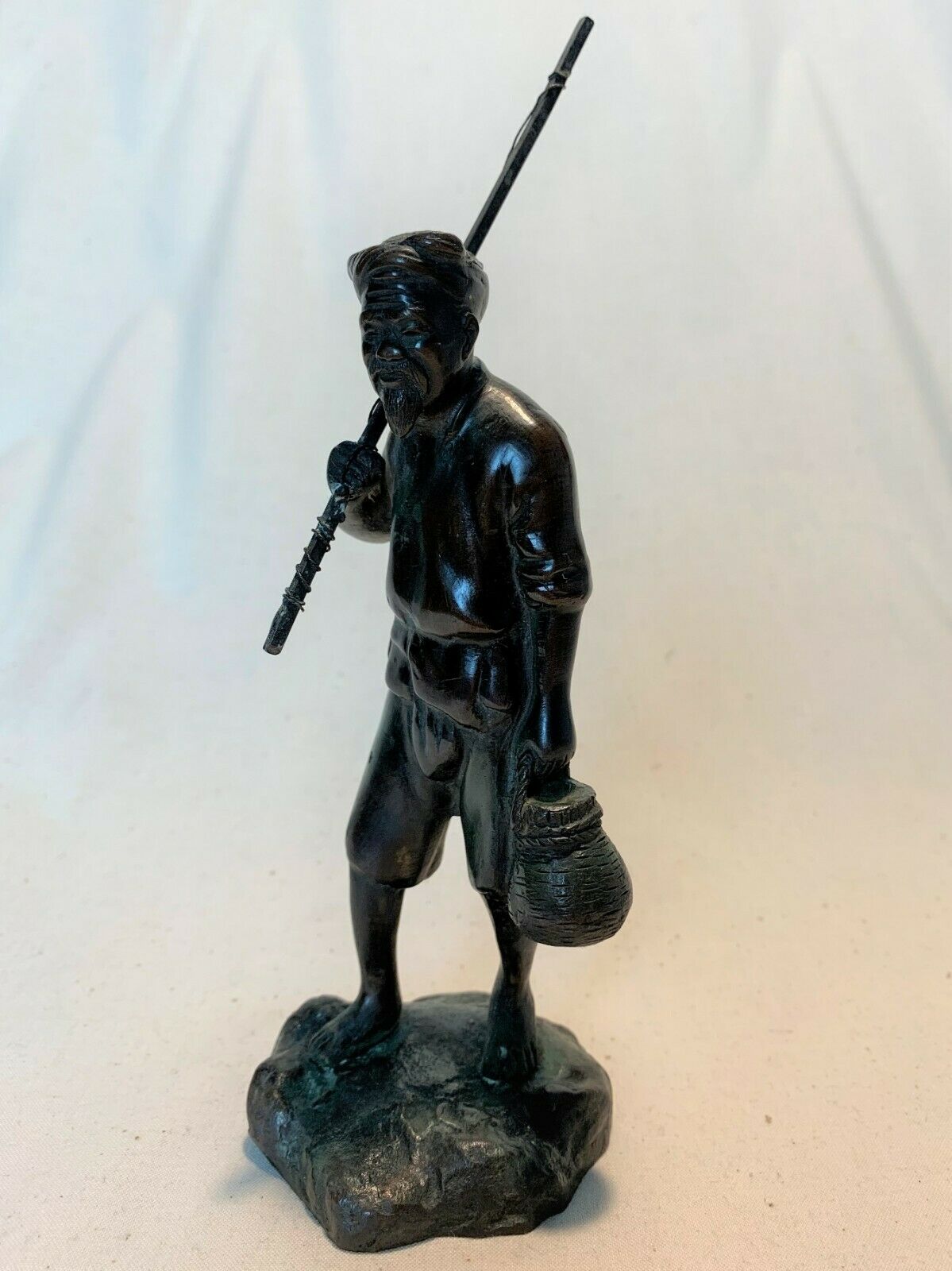-40%
Khmer Koh Ker Sandstone Lokeshvara, 10th Century
$ 3643.2
- Description
- Size Guide
Description
Khmer Koh Ker Sandstone Lokeshvara, 10th CenturyHeight: 41 inches with the metal stand, 35 inches without the stand
Width: Approximately 16 inches at its widest part
Weight: Approximately 70 pounds
This is a 10th century Khmer sculpture of Avalokiteshvara from the Koh Ker period; in Cambodia he is called Lokeshvara.
Behind Lokeshvara’s diadem, his hair is drawn into a high chignon encased in a stiff, closely woven covering or mukuta, which is one of the distinctive features of the Bodhisattvas as depicted in Southeast Asia. Against the chignon, above the crown, is seated his Dhyani-Buddha, Amitabha.
Avalokiteshvara in Sanskrit means "the Lord who oversees, in Cambodia he was referred to as Lokeshvara or “Lord of the World”. According to Mahayana doctrine, Avalokiteshvara is the bodhisattva who has made a great vow to listen to the prayers of all sentient beings in times of difficulty, and to postpone his own Buddhahood until he had assisted every being on Earth in achieving nirvana.
He is referred to as Kannon in Japan, Guanyin in China, Quan-am in Vietnam and Chenrezig in Tibet. The Dalai Lama is considered an incarnation of Avalokiteshvara by Tibetan Buddhists. Among the Bodhisattvas, it is Avalokiteshvara who has the largest number of forms and is perhaps the most venerated and most popular Buddhist deity. His sex, originally masculine, is sometimes considered feminine in China and Japan, although this is not supported by canonical text. This may be because men are often tempted to attribute a feminine quality to all the deities who appear to them to be endowed with essentially “feminine” virtues such as compassion, gentleness, and goodness of heart or purity.
A completed letter, similar to the one in the photos, will be included with the purchase.
This authentic Khmer sculpture is from my personal collection.
I purchased this sculpture around 1990 from a reputable antique dealer in Bangkok, Thailand and it has been in my possession since then. I was in charge of the international sales for a company in the 1980’s and 1990’s and I spent a great deal of time in Asia and got to know the owner of the antique store. He had a direct connection with military generals in Cambodia who had a warehouse full of original sculptures and sold them to the dealer when they needed to supplement their income. In the early 1990’s casino gambling became legal in Cambodia. The casinos allowed the generals to have an alternative secondary source of income that was better and more stable, which ended the supply to the antique dealer. A photo of the antique dealer's shop in Bangkok is attached.
This is a large and heavy sculpture and will be packed and crated to insure it is safely transported to its new home
